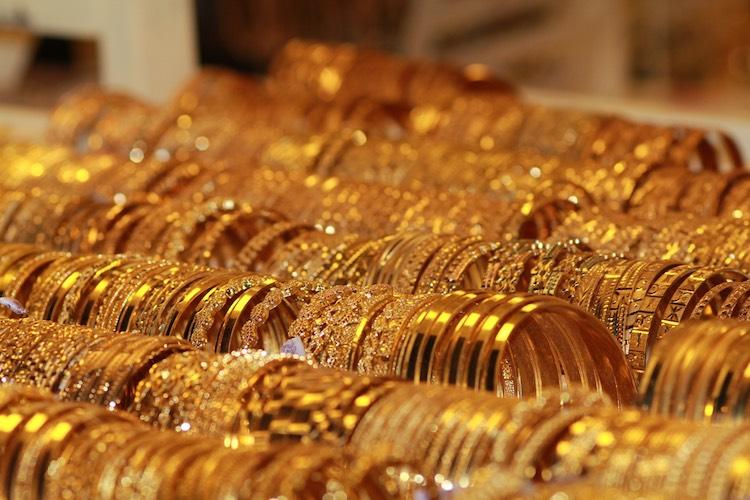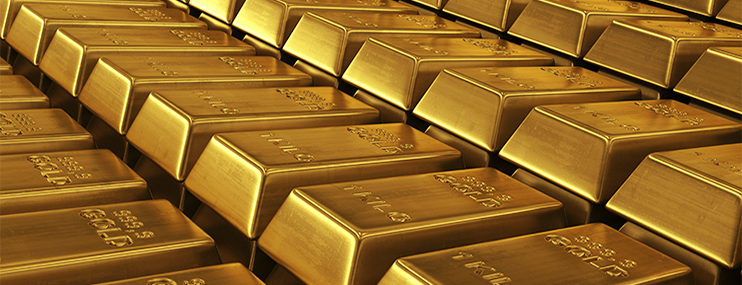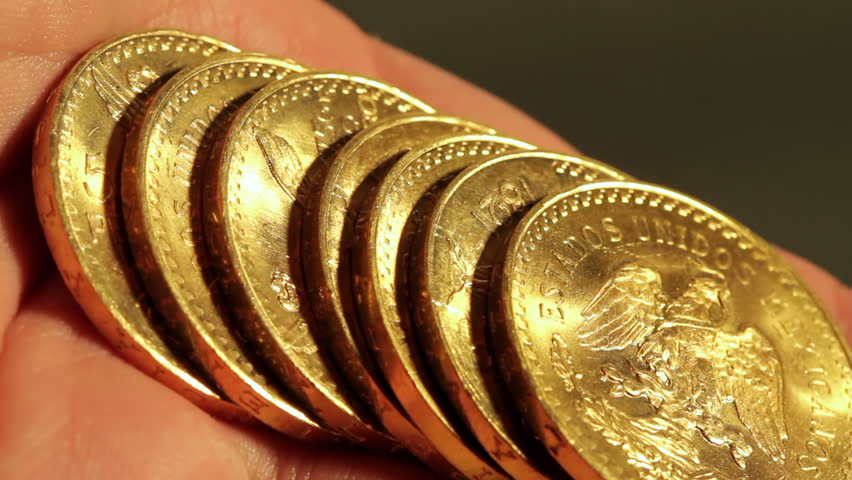Gold as an investment is a widely debated topic. Gold pays no interest or dividends. Gold, however, can rise in value.
Gold prices haven’t done much in recent years. It did go up significantly in the 2000s but hasn’t done much in recent years. So, why would anyone invest in gold then?
The main wealth creation from gold comes in the form of capital appreciation.
Gold also plays an important role in wealth preservation. Among all the precious metals, gold seems to have the best safe haven and hedging properties. It is particularly viewed as a good hedge against inflation.
 People pour money into gold during a financial crisis when stocks, bonds, and real estate markets are creating havoc.
People pour money into gold during a financial crisis when stocks, bonds, and real estate markets are creating havoc.
In fact, people still remember the pains of the global financial crisis of 2008 and invest a portion of their wealth in gold just to feel safe about their money.
Gold by itself may be too volatile and deeply affected by supply and demand factors. Gold prices can either change quickly or remain stagnant for long periods of time. Hence, investing in just gold and gold mutual funds might not be the best idea.
However, if gold can become one of your asset classes in a well-rounded portfolio, then the precious metal has plenty to offer. It tends not to do much when stock markets are rising. However, it can provide positive returns when the rest of your portfolio is not performing well. Thus, gold can be a safe investment if it is viewed in the right way. In fact, Ray Dalio the world-renowned expert on asset allocation and founder of the world’s largest hedgefund tends to suggest holding about 7.5% of your portfolio in gold.
The intrinsic value of gold and the demand-supply scenario
Statistically speaking, about 50% of all gold is used for making gold jewelry. Countries like India and China are voracious consumers of gold products. The other 40% of gold is used for investments. Gold coins, bullion, gold bars, medals, etc. are bought by central banks, gold investors, and mutual funds that invest in gold on behalf of their clients. The remaining 10% of gold find use in industrial and commercial applications.
Looking at these numbers, it is clear that almost 60% of gold demand is driven by its intrinsic value. This has been the case for many decades with money also being backed by gold throughout history (gold standard). It was in 1973 that the US stopped backing paper money with gold. However, that does not affect gold’s intrinsic value or its safe-haven status.
 There is a limited amount of gold available on earth. The gold that has already been mined is already in use, as described above.
There is a limited amount of gold available on earth. The gold that has already been mined is already in use, as described above.
The gold that is still to be mined is increasingly more complex and expensive to extract.
There is a finite quantity of gold in the world and unless there is a technologically enhanced way of extracting gold cheaply, the price can only go up due to rising demand and limited supply.
Gold has more intrinsic value than the US dollar, which is often considered as a safe currency.
The US government can simply print more dollars if it wants to. However, no one can create gold at least not without a cyclotron for prices that would never make sense.
Since gold can’t be created and if the gold-peak theory is true, then declining gold production means that the fresh supply of gold will continue to shrink in the future.
Gold’s correlation and standard deviation
Gold has an interesting set of stats in terms of returns when compared with the stock market.
Most people tend to invest at least a portion of their savings and wealth in stocks either by direct investments or by purchasing units of mutual funds and ETFs.
The standard deviation, a measure of volatility, for the stock market over the past five or six years has been around 10%.
The average return of the S&P 500 during that time has been around 13%. So, an investor in most cases would have had returns range between a low of 3% and a high of 23%.

Gold, on the other hand, had an average return of around 4% during the last five or six years and a standard deviation of about 16%.
This high standard deviation means that gold investors could have had returns of -12% to 20%.
That basically means a loss of 12% annualized or a gain of 20%. That kind of return range is far more volatile than the stock market returns. Hence, gold returns tend to be more unstable than stock returns in large part because it doesn’t produce cashflow.
Now let us look at the correlation of gold with the stock market. Over the last ten years or so, the coefficient of gold with respect to the stock market has been around 0.04.
That basically means that gold moves in a direction that are not closely linked to the stock market’s direction. Gold does its own thing.
Now compare that correlation with the correlation between the stock market index and the midcap index over the last ten years.
That number is 0.98, which means that mid-caps move very much in sync with stock market indices.
Even when you compare gold’s correlation with bonds over the last ten years, the coefficient number comes out to be around 0.25. This means gold has a low correlation with bond prices and is a safe hedge against bonds as well.
So the conclusion from the correlation analysis is that gold can provide refuge during bear markets even though gold is more volatile.
How much gold should be owned?
 Because of its volatility, gold should not be the sole investment. If you get the timing wrong, then you could end up with losses as outlined in the analysis above.
Because of its volatility, gold should not be the sole investment. If you get the timing wrong, then you could end up with losses as outlined in the analysis above.
An investor should focus on the interplay between gold and other asset classes and use gold as a hedge against downturns in the stock, bond, and real estate markets.
Perhaps a 5 to 10% allocation to gold may be a wise decision. Discuss your desire to invest in gold with your financial advisor and try to come up with a ratio that positions gold as a hedge rather than as a growth component in your portfolio.
What form of gold should be purchased?
Once you have made your decision to invest in gold, the next question that comes to mind is how to invest in gold? Should an investor buy gold coins, gold bars, invest in gold exchange-traded funds (ETFs), or buy jewelry?
Buying jewelry is really not recommended. Jewelers not only charge you the gold grammage cost but also design and forging costs as well as mark-up.
You would lose a significant percentage of your outlay in these additional charges.
Gold coins and gold mars also have a mark-up slapped on them by sellers. After all, jewelers and sellers also need to make a living and will build-in their cut into the price that they will quote you.
Even if you were to buy the gold coins or bars, you would have to spend some money to rent out a deposit box to keep that gold safe.
It might not be easy to sell a partial portion of your gold holdings in case you need to rebalance your portfolio further down the line. You cannot sell half a gold bar, you would have to liquidate the full bar. The same goes for jewelry.
One attractive option for investing in gold is buying a gold ETF. This exchange-traded fund tracks the price of gold closely and counts gold as its primary asset. It also has a low expense ratio of less than half a percent.
So, the investor retains most of the returns that the underlying gold generates.
With an ETF, buying and selling are very easy. You can trade as many units as you like and do not have to sell a full bar of gold if you don’t need to. You also don’t have to drive to the bank or deposit box and then take your gold to the dealer. Gold ETFs are pretty liquid. Be aware though many gold ETFs aren’t simply buying physical gold and therefore could perform differently.
Another option is to invest in gold miners. However, gold miners extract not just gold, but also copper and other metals.
Hence, even though the majority of a gold miner’s activity is extracting gold, it is still not a pure play investment in gold.
With gold miners, the investor is also exposed to risks like sub-optimal miner performance, political risks in the country where the mine is, and other health and safety issues on site.
These things can pull down a miner’s stock price even if gold prices are heading up. So, investing in gold mines or miners is not the safest investment option.
